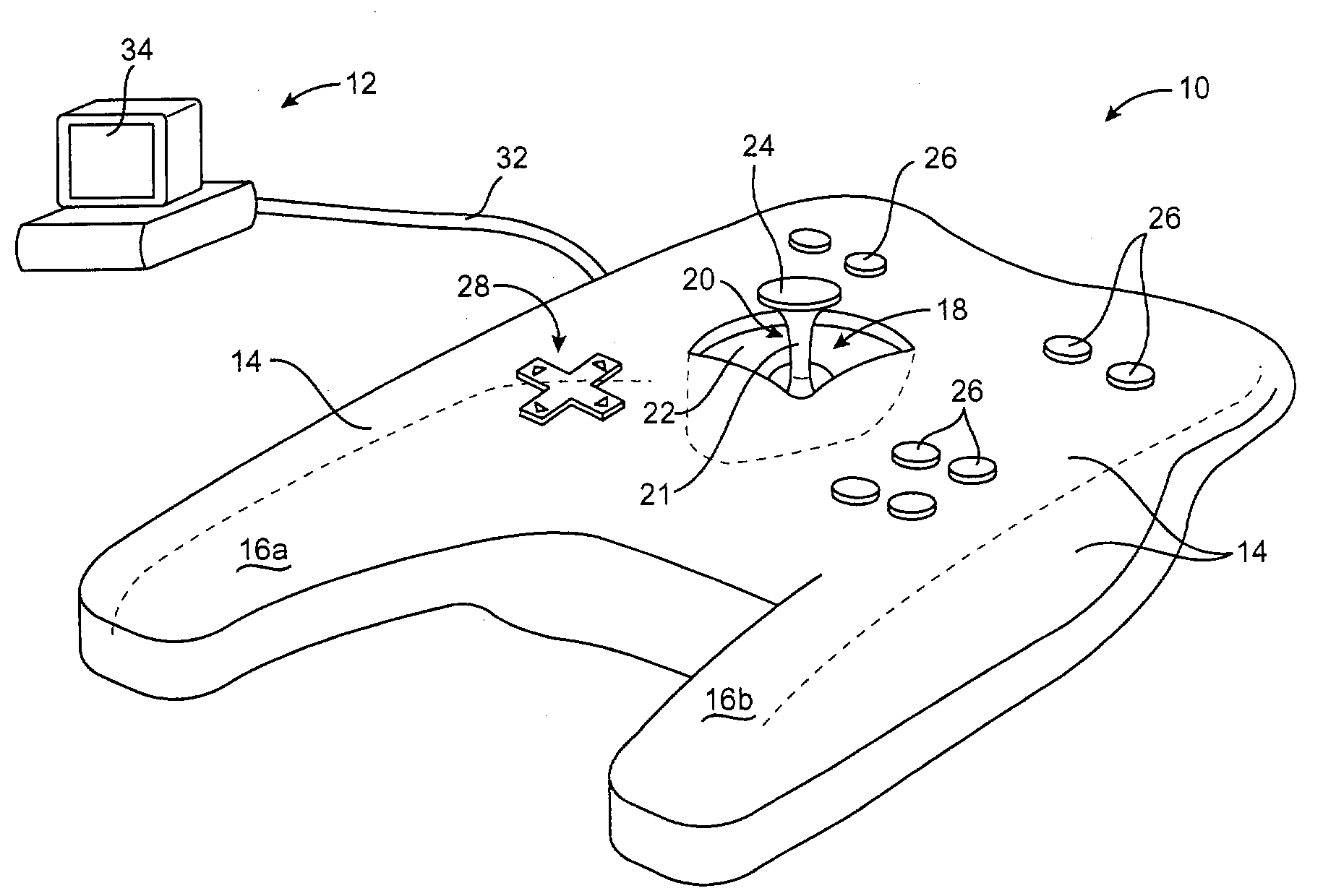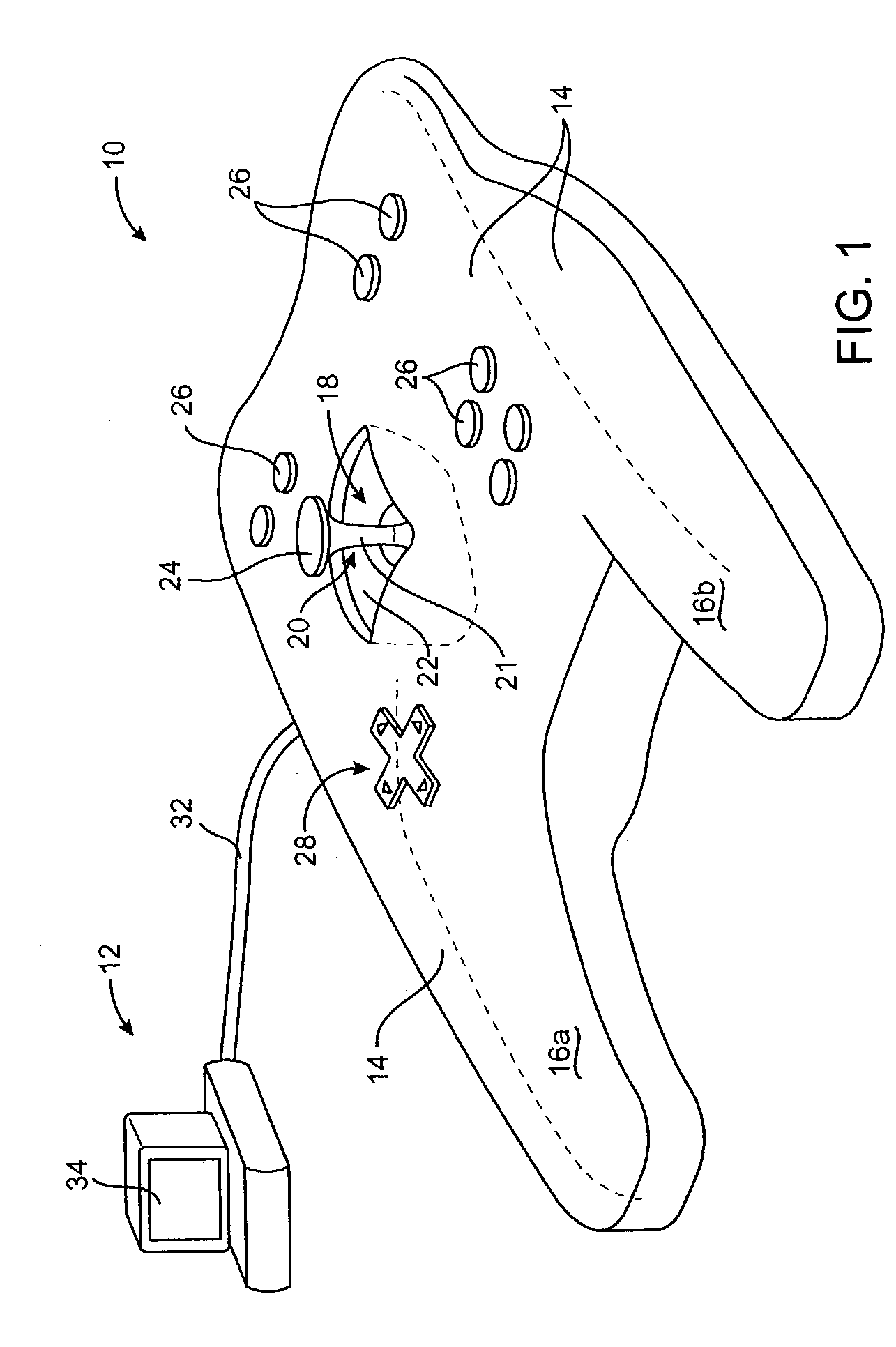Flexure mechanism for interface device
a technology of interface device and flexure mechanism, which is applied in the direction of mechanical control device, manual control with single controlling member, instruments, etc., can solve the problems of high cost of mechanism provided in both regular and force feedback interface device, difficult to integrate compelling force feedback into a smaller interface device such as a handheld gamepad or joystick, etc., to achieve low cost, easy manufacturing, stable and accurate
- Summary
- Abstract
- Description
- Claims
- Application Information
AI Technical Summary
Benefits of technology
Problems solved by technology
Method used
Image
Examples
embodiment 100
[0065]FIGS. 5a–5b are perspective views of an alternate embodiment 100 of the gimbal mechanism of FIGS. 2 and 3. FIG. 5a shows a view of the top side of the mechanism, and FIG. 5b shows a view of the bottom side of the mechanism. Mechanism 100 operates substantially similarly to the mechanism 25 shown in FIG. 3. A ground member 102 is coupled to ground, extension member 104a is flexibly coupled to ground member 102 by flexure coupling 108a, central member 106a is flexibly coupled to extension member 104a by flexure coupling 110a, central member 106a is coupled to central member 106b by flexure coupling 112, central member 106b is coupled to extension member 104b by flexure coupling 110b, and extension member 104b is coupled to ground member 102 by flexure coupling 108b. Rotation about axes A and B and floating axes D and E are similar to the operation described above with respect to FIG. 3.
[0066]Mechanism 100 differs from the embodiment of FIG. 3 in that central members 106 extend d...
embodiment 150
[0071]FIGS. 6a–6i are side elevational and perspective views of an alternate embodiment 150 of the gimbal mechanism 25 of the present invention. FIGS. 6a and 6b are top and side elevational views, while FIGS. 6c–6i are perspective views of the alternate gimbal mechanism.
[0072]Gimbal mechanism 150 is a unitary flexure, similar to the embodiments described above. An extension member 152a is flexibly coupled to a central member 154a, which is flexibly coupled to central member 154b. Member 154b is flexibly coupled to extension member 152b. However, unlike the embodiment of FIG. 3, the flexible unitary member does not include a ground member, such that the extension members 152 are not coupled together as part of the unitary member. Instead, transducers 156, such as actuators and / or sensors, are connected to the extension members 152 at the connection portions 158, so that three flexure couplings are used instead of the five of FIG. 3. Transducers 156 are shown in the perspective view o...
PUM
 Login to View More
Login to View More Abstract
Description
Claims
Application Information
 Login to View More
Login to View More - R&D
- Intellectual Property
- Life Sciences
- Materials
- Tech Scout
- Unparalleled Data Quality
- Higher Quality Content
- 60% Fewer Hallucinations
Browse by: Latest US Patents, China's latest patents, Technical Efficacy Thesaurus, Application Domain, Technology Topic, Popular Technical Reports.
© 2025 PatSnap. All rights reserved.Legal|Privacy policy|Modern Slavery Act Transparency Statement|Sitemap|About US| Contact US: help@patsnap.com



